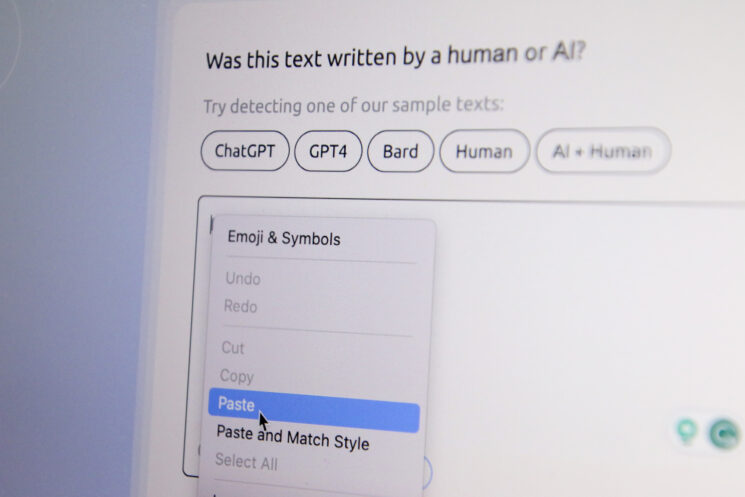
By Katelynn Luu
With the rise of generative AI tools such as Chat GPT, students’ academic honesty has become a major concern, and some teachers have made changes to their classroom policies in order to mitigate this.
Some of the most common changes included doing more writing in class on paper and pencil instead of on a computer.
“I’m definitely having more students do more writing on paper in class,” English teacher David Theriault said. “If I say, ‘Answer this question in a discussion,’ I don’t know if [students] have done it on Chat GPT, but if I have [them] write it on a piece of paper and then take a picture of that piece of paper and then upload it to the discussion, I feel a little bit more sure that that’s actually their writing.”
Fellow English teacher Jonathan Lloyd took a similar approach. He enforces students to use a secure browser when testing and also utilizes more in-class writing assignments.
Another change that some teachers made is to include the use of AI tools in their lesson plans.
“Last spring I began my journey with AI in the classroom by designing some lessons that focused on using it as a tool and becoming aware of how AI works,” English teacher Dawn Lawler said. “This year I will also be designing some new lessons where students will investigate and utilize AI as part of our learning, especially in writing and how to use the tools created to enhance learning not replace learning.”
English and AVID teacher Kiersti Patton had a similar experience.
“I changed my syllabus and I am creating a lesson on [using generative AI tools],” Patton said. “My AVID students are reading an article [and] having a socratic seminar about employers using AI to sift through employee job applications.”
Some teachers plan to use AI detection tools such as Turnitin.com to detect the use of generative AI in students’ work.
“I showed students that Turnitin.com detects AI. I told them that if Turnitin.com detected AI in their essays, I would be having a conversation with them, and it could result in an honor code violation,” English teacher Doug Wilton said.
Similarly, social studies teacher Kevin Doan did not make any changes to his classroom this year due to generative AI tools and will continue to use Turnitin.com to detect plagiarism.
However, one teacher raised the concern of how accurate these AI detection tools really are in the context of a college professor using a free online AI detector. Theriault shared some advice for students to protect their work from being accused by an AI detection tool.
“I think students need to really be mindful of writing [their work] out in Google Docs so [there is] a revision history and maybe not writing it all at once so that it saves, stops, and then restarts,” Theriault said. “Use tools that show your work.”
With all the uncertainty that surrounds the regulation of the use of generative AI tools in an academic setting, teachers shared their opinions and advice to students.
“I feel students using AI technology as a tool to help, support and guide learning can be a valuable and worthwhile aspect of learning,” Lawler said. “But students who use AI technology as a crutch, to cheat or plagiarize and a way to circumvent learning is something I do not support. I think AI is the future but still needs to be used and understood with a critical eye and as a tool for assistance — not as a replacement for learning.”
“Each teacher is going to have a different policy when it comes to AI. Always talk to your teachers before using it,” Patton said.





